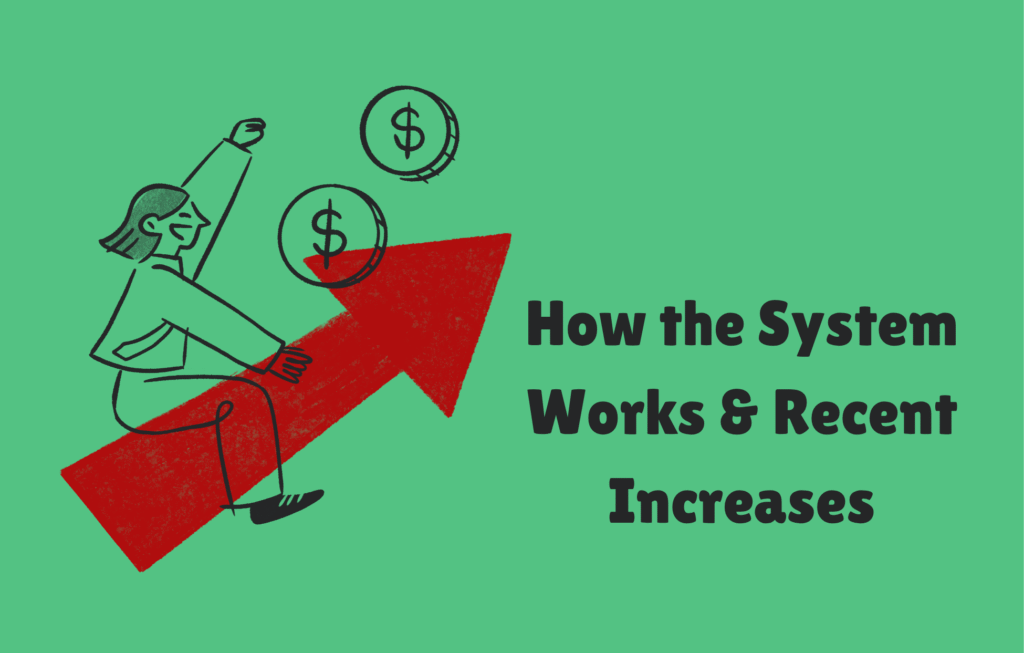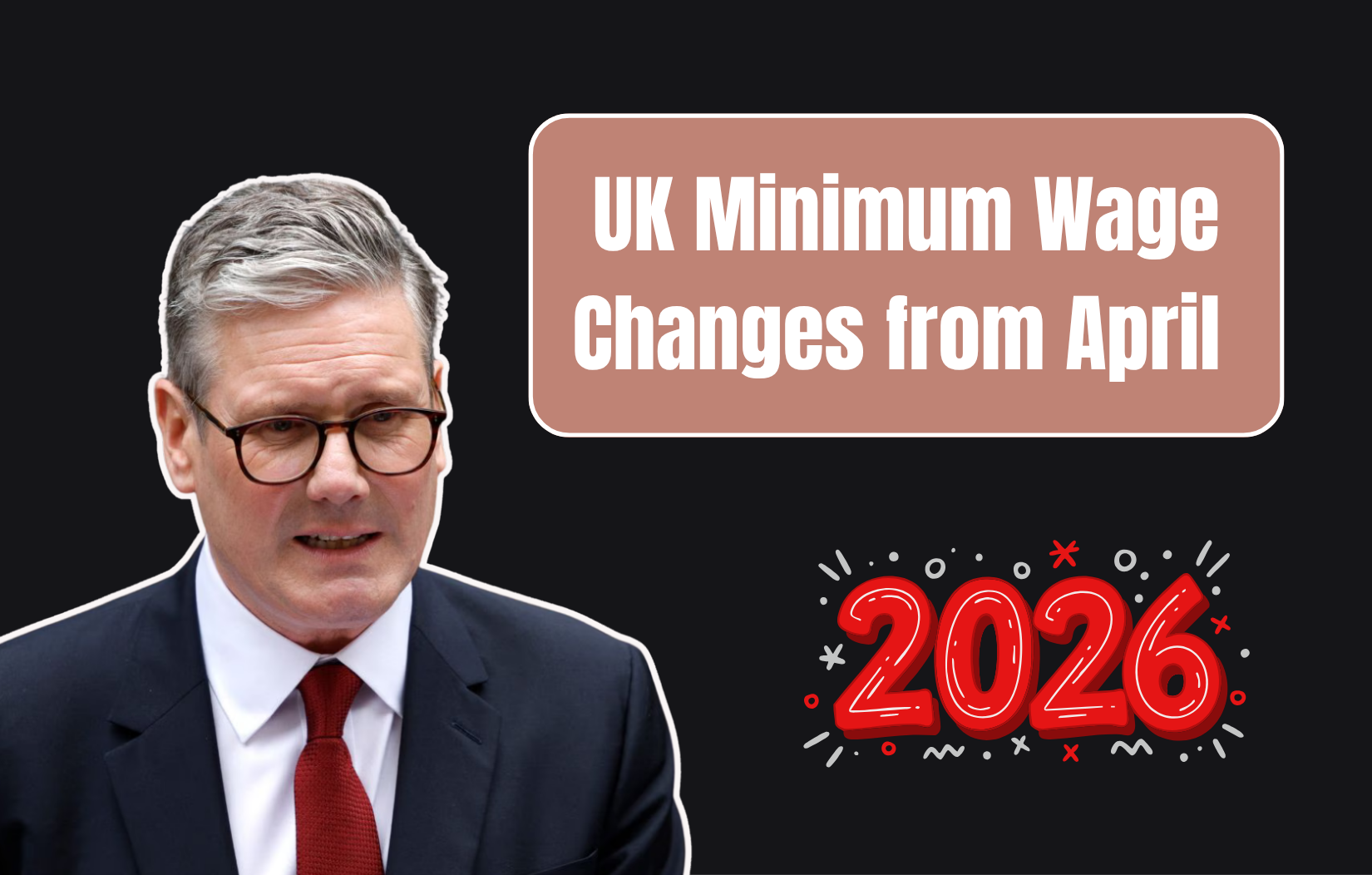UK Minimum Wage Increase, April 2026: Key Changes for Workers & Employers
Every April, the UK revisits the statutory minimum wage rates — a moment closely watched by millions of workers and thousands of businesses. For April 2026, several important shifts are anticipated: not just a fresh hourly rate increase, but also changes in the way age bands and wage alignment are being handled. This article walks through the latest updates, the drivers behind proposed changes, and what workers and employers should be ready for.
Background: How the System Works & Recent Increases

To understand 2026, first it helps to recap how the UK’s minimum wage system operates.
- The National Living Wage (NLW) is the legally binding minimum rate for adults (for a given threshold age).
- Below that, younger workers (e.g. 18–20, 16–17) and apprentices have lower minimum wage rates.
- Each year, the independent Low Pay Commission (LPC) advises the government on what the NLW / National Minimum Wage (NMW) should be. The government issues a “remit” that gives criteria (e.g. cost of living, labour market, business viability) that the LPC must consider.
- After consultation and evidence gathering, the LPC submits recommendations (typically by October), and the government announces the new rates to take effect from 1 April.
In recent years, the government has emphasized two key targets in the remit:
- Ensuring the NLW does not drop below two‑thirds of median earnings for eligible workers.
- Incorporating cost of living, inflation forecasts, and broader economic conditions into the LPC’s recommendations.
For instance, in 2025, the government accepted the LPC’s recommendation of £12.21/hour for workers aged 21 and over — a 6.7% increase. For younger age bands:
- 18–20: £10.00/hr (up from £8.60)
- 16–17 and apprentices: £7.55/hr (up from £6.40)
- The accommodation offset (allowable deduction for employer‑provided lodging) also rose to £10.66/day.
These increases were designed to deliver real‑terms pay growth (i.e. rising above inflation) and to preserve the NLW’s intended relationship to median earnings.
What’s Proposed for April 2026: Estimates & Remit Changes

As of mid‑2025, the picture for April 2026 is not yet final, but updated estimates and new signals from the government point to likely developments.
Remit Adjustments & Policy Signals
- In August 2025, the government published its 2025 remit for the LPC. In that document, two notable policy directions were emphasized:
- The NLW must continue to not fall below two-thirds of median earnings for eligible adults.
- The government explicitly asked the LPC to consult on removing the discriminatory age bands — in other words, the possibility of merging the 18–20 rate into the NLW (i.e. applying the adult rate to all 18+) beginning April 2026 or in stages.
- The move to remove age bands has been framed as part of the government’s broader pledge to deliver a “genuine living wage” and end age‑based pay discrimination.
- The LPC’s consultation (deadline 30 June 2025) welcomes evidence on the effects of prior upratings and how to proceed with structural reform.
Estimates from the Low Pay Commission
In August 2025, the LPC updated its projections for the 2026 NLW:
- Central estimate: £12.71/hour — this would represent a ~4.1% increase over £12.21.
- Projected range: £12.55 to £12.86.
These estimates reflect upward revisions relative to earlier forecasts, largely because wage growth has outpaced prior expectations.
However, the LPC emphasizes that these figures are indicative only: the final recommendation will consider prevailing economic conditions (inflation, labour demand, business viability) closer to October 2025.
It is also possible that the 18–20 rate could be fully aligned with the adult rate in April 2026 (i.e. 18–20 paid the same as 21+), or that a phased alignment path might be recommended.
One illustrative scenario: if the LPC and government decide to merge the 18–20 rate into the NLW immediately, then the minimum wage structure would simplify — but this would imply a steep jump in the 18–20 cohort’s pay (e.g. from £10.00 to perhaps ~£12.71). Analysts estimate such alignment could imply a +27.1% increase for 18–20s in that scenario.
Another possibility is a phased approach: raise the 18–20 rate part way in 2026, with full convergence by 2027.
Thus, while £12.71 is a plausible headline figure, much depends on decisions yet to be made later in 2025.
What Workers Should Expect

Hourly Pay and Income Gains
If the NLW does move to ~£12.71, workers aged 21+ would see an increase of roughly 50 pence per hour (i.e. ~4.1%) over the 2025 rate of £12.21. That would modestly boost earnings for minimum‑wage workers.
For full‑time work (e.g. 37.5–40 hours a week), that could add several hundred pounds per year, before tax and deductions.
Younger Workers & Apprentices
The big question is whether 18–20-year-olds will see a simple catch‑up to the adult rate, or whether changes will be incremental.
- If aligned fully in 2026, the jump from £10.00 to ~£12.71 would be substantial. This could significantly increase earnings for younger workers, narrowing the gap with older peers.
- If phased, the increase might be more moderate in 2026, with full alignment later.
- For 16–17s and apprentices, increases will still likely be required, though at lower rates. The LPC’s remit continues to require setting youth and apprentice rates “as high as possible without damaging jobs.”
Real‑Terms Growth & Cost of Living
Because inflation (and cost of living pressures) is a key consideration in the LPC’s remit, the goal is to deliver real‑terms wage growth. That is, new rates should ideally outpace inflation, protecting low‑paid workers’ purchasing power.
Inflation forecasts between April 2026 and 2027 will shape the final recommended rate.
Employment and Hours Effects
A perennial concern is whether minimum wage increases reduce employment or hours among the lowest paid. The LPC and government try to balance wage fairness with labour market impact in their decision-making.
If increases are too sharp, some employers—especially small businesses or in low-margin sectors—may respond by reducing hours, automating tasks, or being more cautious about hiring. The LPC’s consultations often solicit evidence on these potential trade‑offs.
That said, past minimum wage rises have not universally led to steep employment losses, especially when phased or when labour demand is strong.
Timing & Transition
Workers should note:
- New rates apply from the start of the first pay reference period on or after 1 April. In other words, if your pay cycle spans April 1, the higher rate may apply from the next pay period.
- Employers must ensure all qualifying workers receive at least the new minimum wage (accounting for overtime, bonuses, etc.).
- Workers should check their payslips and hours carefully, especially during transition periods, to ensure compliance.
What Employers Must Prepare For
Increased Labour Costs
One obvious impact is the higher wage bill. If the NLW increases to ~£12.71, that’s a 4.1% increase for workers currently at the minimum. For employers with many minimum‑rate staff, the cumulative cost could be significant.
If 18–20s are aligned upward, many more workers will be affected, multiplying the cost.
Some estimates (for 2026/27) suggest that for a hypothetical organization with 50 standard NMW employees, total employment costs might increase by around 4.2%.
This increase comes on top of other cost pressures many firms already face (energy, supply chain, inflation, tax burdens).
Budgeting, Pricing & Profit Margins
Employers (especially in tight-margin industries like retail, hospitality, or small services) may need to:
- Revisit budgets and forecasting for 2026/27.
- Consider raising prices to offset increased wage costs.
- Reassess staffing levels, rostering, shift patterns, or overtime budgets.
- Evaluate automation or productivity improvements that can absorb additional labour costs.
- Possibly adjust hiring plans or freeze some recruitment in cost‑sensitive areas.
Payroll & Systems Readiness
- Payroll and HR systems must be updated to reflect the new rates.
- Employers need to audit existing contracts, pay bands, allowances, and ensure no worker falls below the new minimum.
- Train HR and payroll staff to understand transitional rules (e.g. pay periods that cross April 1).
- Check whether benefits, bonuses, or allowances need adjustment so total compensation doesn’t inadvertently dip below the legal floor.
Sector‑Specific Risks & Negotiations
Certain sectors may face greater pressure:
- Hospitality, retail, care, cleaning, social care — sectors with many lowest-paid roles and tight margins.
- Employers in sectors with intense competition or thin profit margins may have less flexibility to absorb cost rises.
- Trade unions and worker groups may demand further increases or improvements beyond statutory minima, prompting collective bargaining pressures.
Phasing and Mitigation
Given potential disruption, some firms and sectors may:
- Roll out increases gradually (where legally permitted).
- Use internal “buffers” or premium pay schemes to soften the impact.
- Advocate via trade bodies for transitional relief, subsidies, or tax offsets.
- Engage in forward planning (e.g. hiring fewer new minimum‑rate workers).
Compliance & Penalties
Failure to pay the statutory minimum wage is a serious risk:
- HMRC enforces compliance and can issue penalties, require back pay, and make your company publicly named.
- Employers should proactively audit their pay practices to ensure they meet the new law from day one.
- Some loopholes (e.g. pay periods crossing the increase date) are legally permitted, but these should be used cautiously and transparently.
Risks, Challenges & Uncertainties
No projection is risk-free. A few caveats:
- Estimates may change — the £12.71 figure is not final; actual rates announced in October 2025 may differ depending on macroeconomic shocks, inflation trajectories, labour market changes, or political considerations.
- Wider economic conditions matter — if inflation spikes or recession looms, the LPC may moderate its recommendation to avoid job losses.
- Diverging sector impacts — not all businesses will be equally able to absorb higher costs; small firms or those in weak markets may be squeezed hardest.
- Behavioural responses — employers may reduce hiring, cut hours, automate, or shift roles to avoid wage pressure.
- Legal and transitional complexity — changes in age band structure or merging wage categories could create legal/administrative complications during implementation.
- Potential for political pushback — powerful business lobbies or trade associations may oppose very steep increases, influencing government policy.
What Workers & Employers Should Do Now
For Workers
- Keep track of pay communications and notices from your employer in late 2025.
- Check your payslips and hours when the April 2026 rate kicks in (especially if your pay period straddles the date).
- If underpaid, you can lodge a complaint via HMRC or employment tribunals.
- Understand your classification — e.g. apprentice, youth rate, etc. — and whether changes in 2026 might change which rate you’re eligible for.
For Employers
- Begin modelling cost impact now, using the estimate range (£12.55–£12.86) to stress-test budgets.
- Engage with trade bodies or industry groups to understand sector-level strategy and advocacy.
- Update payroll systems and contract templates ahead of time.
- Communicate transparently with staff about upcoming changes, transition mechanisms, and how shifts in staffing or hours may play out.
- Monitor the LPC consultation to make your voice heard in shaping policy.
Conclusion
The April 2026 minimum wage increase is shaping up to be more than just a number bump. With the government pushing to eliminate age‑based pay bands and align all adult workers to a single rate, combined with ongoing pressures from inflation and wage growth, the stakes are higher than ever.
For workers, the likely rise (to somewhere between £12.55 and £12.86, with a central expectation of £12.71) offers continued real‑terms improvement in income, especially for the lowest paid. For employers, especially in labour‑intensive sectors, the challenge will be managing rising wage costs while maintaining competitiveness and profitability.
Because the final rates won’t be locked in until later in 2025, both workers and employers should stay alert to announcements, plan flexibly, and advocate where appropriate.
FAQs
1. What is the UK National Living Wage (NLW)?
The NLW is the legally mandated minimum hourly pay for workers above a certain age, set annually based on economic conditions and recommendations from the Low Pay Commission.
2. When will the new minimum wage take effect?
The updated minimum wage rates will apply from 1 April 2026, starting with the first pay reference period on or after that date.
3. What is the estimated NLW for April 2026?
The Low Pay Commission’s central estimate is £12.71/hour, with a projected range of £12.55–£12.86, subject to change based on final economic conditions.
